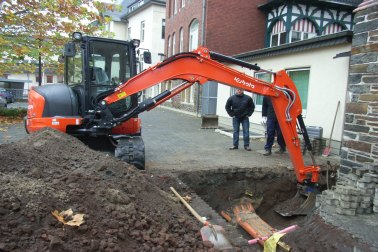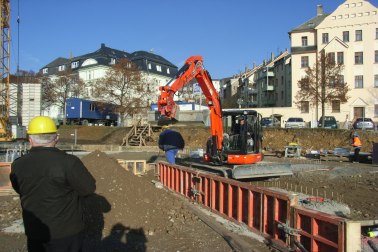
To know more about the Construction Equipment industry

To know more about the Construction Equipment industry
International Contributions
Turning fields of mines into a place to live
CASE 02All stranded workers rescued
CASE 03Construction machinery playing an active role in cultural property restoration
CASE 04Supporting local effort to improve rough roads
CASE 05High mobility that does not damage structures
Since 2008, Komatsu has partnered with Japan Mine Action Service – JMAS (an Approved Corporation Engaging in Specified Non-profit Activities) to conduct demining activities in areas suffering from anti-personnel landmines and projects for community restoration in Cambodia, Angola (completed) and Laos. The Company provides, free of charge, anti-personnel landmine removal equipment and construction equipment, which were developed using the specialized technology and manufacturing knowledge unique to this construction equipment manufacturer. On the safe, mine-free land, the Company then uses construction machinery to develop farmland, build reservoirs and elementary schools, and repair and construct roads and bridges, supporting reconstruction and revitalization of communities as well as forming the foundation of livelihoods for their independence and growth.
Particularly noteworthy among such projects are landmine removal and regional reconstruction support activities in Cambodia, which marked the 10th anniversary in 2018. Through the free loan of anti-personnel landmine removal equipment and construction machinery, more than 2,000 anti-personnel landmines were removed from a total of 2,100 ha, and subsequently over 70 km of roads, nine elementary schools, 47 irrigation reservoirs and other facilities were built by the first half of 2019. These activities helped to convert minefields into safe farmland and create distribution routes for villagers to sell goods, which enabled many villagers to become independent and improve their livelihood. Also, the improved environment has made it possible for nearly 600 elementary school students to go to school safely.
Komatsu will continue to engage in activities to contribute to the rehabilitation of the entire region by providing support through its core business of construction machinery.
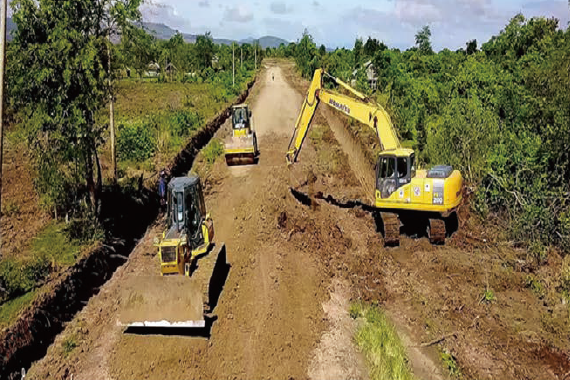



At around 10:30 am on September 14, 2017, a collapse occurred at a tunnel construction site in China, leaving nine workers stranded in the pit. In response to a request for cooperation from the local rescue team, Koken dispatched its employees and employees of its Chinese agent to the site. At 10:30 am on the next day, Koken’s explosion-proof arrow drill RPD-180CBR managed to bore a 21-meter hole through collapsed soil mass and confirm the survival of nine stranded workers. Then a vital lifeline for rescue activity, specifically a path to bring in water, food and communication devices, was successfully set up, enabling communication with the stranded workers.
Koken then managed to deploy its boring machine FS-120CZ (Unit No.1) at the site on the night of the 15th, despite difficulties in transport due to unpaved and narrow paths. The machine began excavating at 1:00 am on the 16th, and later at 10:30 am inserted a pipe with a diameter of 700 mm for the rescue operation. Then at 12:30 am, all nine people were successfully rescued, 50 hours after the accident occurred.
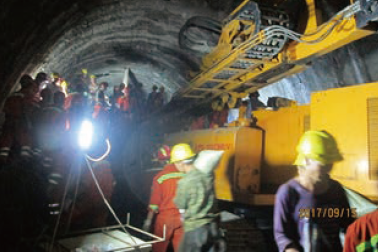

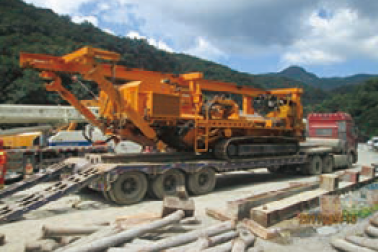


Tadano engaged in the “Moai Restoration Project” on Easter Island, Chile, from 1988 to 1996. The Company donated a crane to the Chilean government and dispatched engineers to the site, and in May 1999, 15 moai statues were restored.
Easter Island is a solitary island in the Pacific Ocean and is designated as a World Heritage Site. The island is famous for its mysterious stone statues called “moai”. Around 1,000 moai statues are said to have been built between the 10th and 17th centuries. However, most of them were pulled down by tsunamis and earthquakes, or during tribal conflicts, and were left lying on the ground.
In November 1988, the governor of Easter Island told a Japanese TV program that a crane would help them to erect the toppled moai statues. A Tadano employee happened to be watching it, and suggested that the Company may be of help with its cranes. This is how the project began.
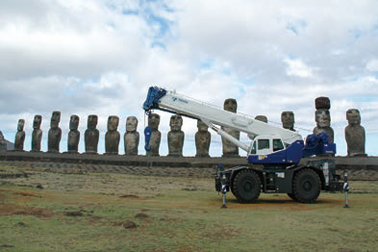
Tadano's Business Development Office undertook the project. Representatives from the project visited the Chilean embassy in Japan to offer cooperation, and an inspection team was sent to the Island. In four years, the “Moai Restoration Committee” was established, in which archaeologists from Japan and Chile discussed and decided parts to be repaired. Finally, the Chilean national monument panel officially approved the repair and restoration work.
The project faced several challenges in erecting the fallen statues. Firstly, a special jig to prevent any damage to the moai had to be developed before transporting the moai-lifting crane. Also, a mock statue with the same shape, size and lithic quality as actual moai had to be made to be used when the special jig was complete. The project made a mock moai statue with Aji stone from Aji Cho town, Kagawa Prefecture, and with it conducted verification tests at a Tadano factory.
In September 1992, Tadano sent to Easter Island a crane, materials for repair, excavation equipment and other items, as well as engineers who engaged in the work and crane operations. The 50-ton lifting crane used for restoration was donated to the Chilean government. The engineers also taught local people required skills such as crane operation, maintenance methods, and slinging methods for four months throughout the restoration work.
In 2006, Tadano donated a 60-ton crane to the Chilean government, which was followed by the third, a 100-ton crane, in 2019, the 100th anniversary year for the Company.
In rapidly growing emerging countries, there are increasing regional disparities due to an imbalance in “employment”, “education”, “medical care” and other social service systems. “Rough roads” are one of many factors involved, as such roads have “slowed down ambulance services for people in emergencies.” Sakai Heavy Industries has been addressing this issue by technology transfer of its stabilizer (PM550) construction method to local people, so that they become able to improve road conditions themselves.
These photos show some examples of the technology transfer activities of the stabilizer construction method using PM550 in Myanmar, Kenya, Nicaragua, and elsewhere. In Nicaragua, Sakai brought in three stabilizers, and during the five years following the technology transfer, local people improved 2,000 km of roads on their own.
Sakai‘s company codes include this sentence: “Contributing to public welfare service in the area of national land development.” Sakai will continue to engage in activities that lead to a brighter future, with a particular focus on road building and national land development.



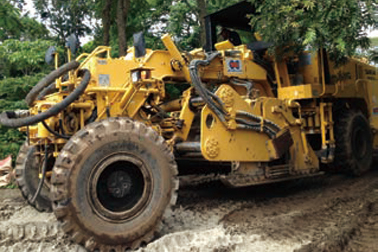




In Paris, France, which has attracted tourists from all over the world, an urban planning program has been undertaken to improve its transportation and infrastructure while preserving the historic scenery. Kubota's compact construction equipment, which has been regularly used in Europe for about 30 years, is demonstrating its power in this city with many historical buildings. The machines can make tight turns, and are highly maneuverable even in traditional narrow alleys without damaging buildings — the qualities most highly regarded by operators.
In addition to preserving the scenery and buildings, in light of the stringent emissions regulations in Europe and the ban on diesel vehicles in Paris (from 2024), Kubota has supplied products which are suitable for local social conditions, while undertaking relevant initiatives such as electrification of the products.
